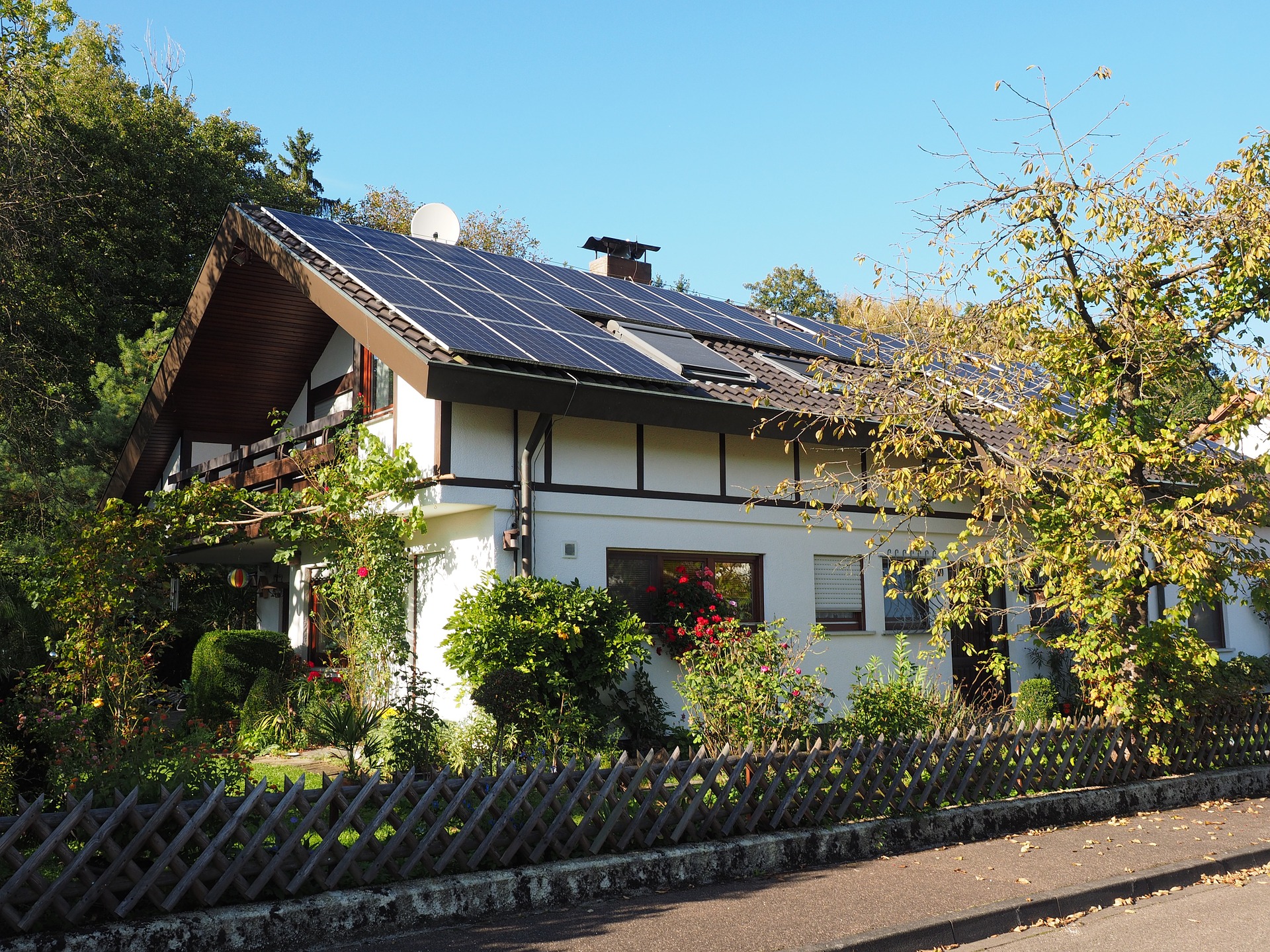The traditional house is typically built on a rectangular foundation, has windows evenly distributed on all four sides, and is topped with an asphalt shingle roof. While the design of the traditional home may be aesthetically pleasing or, at the very least, what we’re all used to, it isn’t the most energy efficient design.

Image credit: Hans via pixabay.com
In particular, the traditional home isn’t designed to efficiently distribute heat and light throughout the house. Hence, in the traditional house, the HVAC system has to do all the work keeping the house at a comfortable temperature, and electric lights have to be used for much of the day in order to keep the house properly illuminated. In this article, we’ll explore just a few of the ways that you can design your house to take advantage of the power of the sun in order to heat and illuminate your house more efficiently.
Roof Color
The roof on a traditional house is typically covered with dark colored shingles. Although this doesn’t seem problematic initially, dark colors absorb sunlight and generate quite a bit of heat. On a clear day, the sun beats down on the roof of your house all day long. Therefore, if you have dark colored shingles on your home, then your roof is absorbing a lot of sunlight and heating up. As any good roofing contractor will tell you, much of this heat is conducted through the roof into your attic and, from there, it seeps into the rest of your home.
In order to fix this problem, all you have to do is lighten the color of your roof, getting as close to white as possible. The lighter the color of your roof, the more sunlight your roof will reflect, and the less heat it will absorb. If you already need a new roof, the best way to lighten your roof is to install a new lighter colored roof covering. If you don’t need a new roof and don’t want to spend a bunch of money, consider having your roof tinted. This isn’t difficult and most roofing companies are able to put a light colored glaze on your roof relatively easily.
Skylights
Many times, centrally located rooms in a traditionally designed house will not have windows. This means that any illumination in such a room will have to come from electric lights. Over time, the cost of electric lighting can add up. Fortunately, there’s a solution: skylights. By installing skylights in a centrally located room that doesn’t have windows, you can completely eliminate the need for electric lights during the day. More than that, skylights are also a way to naturally heat a room. During cold winter months, a skylight can let in enough light and heat to keep a room comfortable without running the heating system.
However, you might be wondering what you can do if the centrally located room you’re concerned about doesn’t have access to the roof. Again, you’re in luck. Reflective tubular skylights can carry light up to 30 feet, meaning that even rooms without immediate access to the outside of the house can benefit from a skylight.
Window Placement
Consider strategically locating the windows on your house so that you can take advantage of the sun’s movement. Obviously, this is no small home improvement project as it requires redesigning the layout of your entire home.
However, if you have full control of your home’s design, whether this is because you are building your home or because you are completely renovating it, you should consider placing your windows according to the principles of passive solar home design. For example, if you live in a cool climate in the northern hemisphere, you should consider placing most of your windows on the south side of your home. This is because in the northern hemisphere, the sun will be in the southern part of the sky throughout the day, which means the south side of your house will receive the most sunlight. By locating your windows on the south side of your home, you can take advantage of the sun’s heat and illumination.
The advice in this article is only the tip of the iceberg. There is a wealth of information out there about how you can make your house more energy efficient by taking advantage of natural (and free) power of the sun. So, whether you’re building a new home or renovating your old one, you should take advantage of passive solar home design principles to maximize the efficiency of your house and cut back on your energy usage.